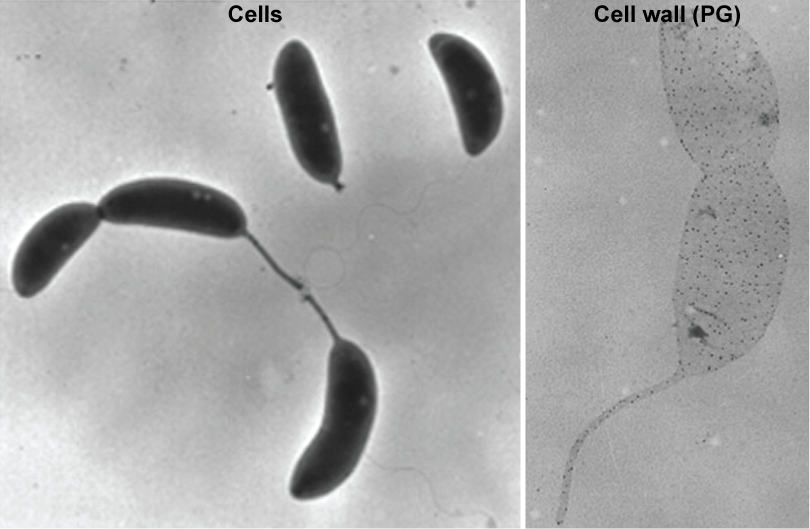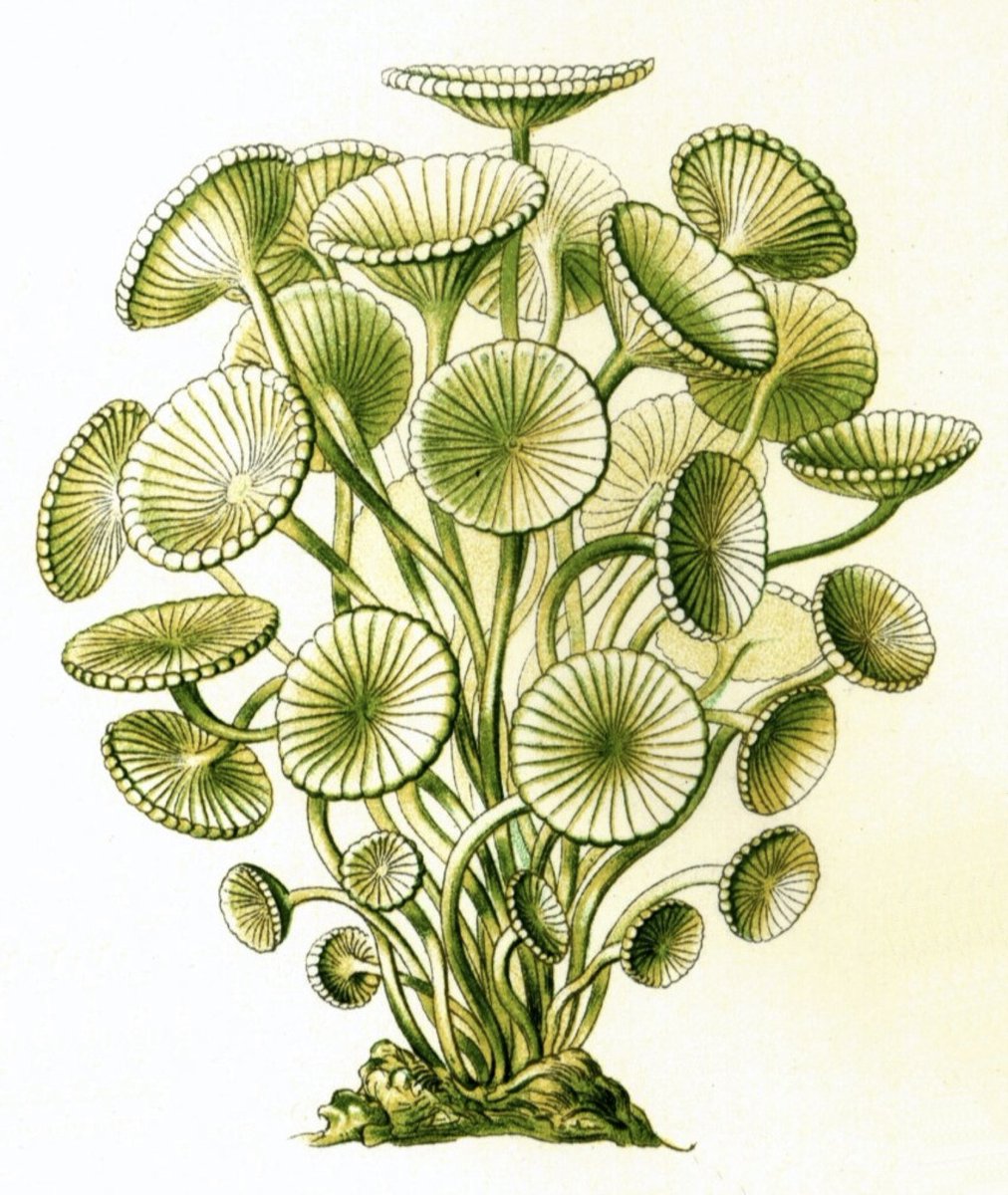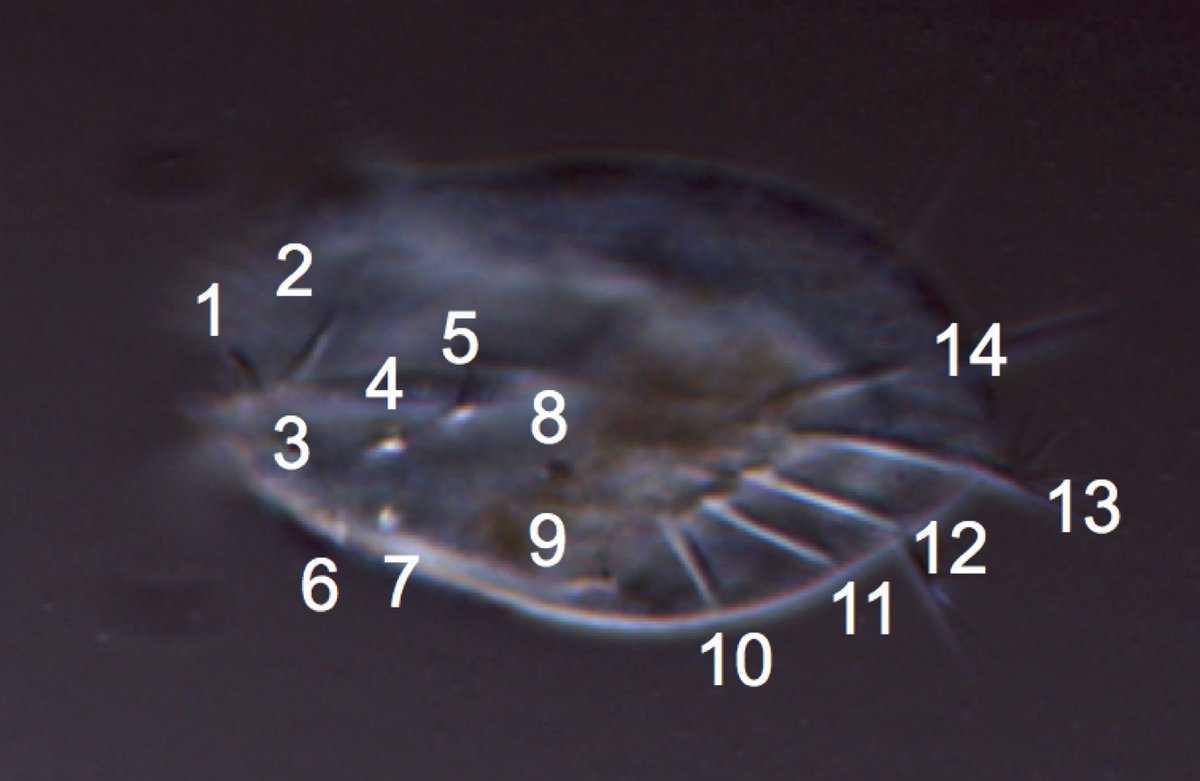Have you seen images of bacteria and wondered, “How do they form such strange shapes?” or “Why do they all look so different?” Join us for today's #DBIOTweetorial as we dive into how and why bacteria adopt the shapes they do! #EngageDBIO @goleylab @jordanmbarrows 

As Kevin Young eloquently put it, “To be brutally honest, few people care that bacteria have different shapes. Which is a shame, because the bacteria seem to care very much.” Check out how diverse bacterial shapes can be! tinyurl.com/6d93vce4 tinyurl.com/uvbtwvs3 

Bacterial shape is largely determined by the peptidoglycan (PG) cell wall, a large macromolecule that surrounds cells and provides structure and support. PG is necessary to maintain cell shape - cells burst when treated with drugs that target PG!
tinyurl.com/m4dys6hb
tinyurl.com/m4dys6hb
PG can hold the cell’s shape all on its own, even when you remove everything else! Take a look at these images of Caulobacter and their PG “skeletons.”
tinyurl.com/4w8whrmc
tinyurl.com/4y9b4z73
tinyurl.com/4w8whrmc
tinyurl.com/4y9b4z73

SO how do you make PG in different shapes? It’s all about patterning - where, when, and how do you build, modify, and break down PG?
tinyurl.com/r7sp6f9n
tinyurl.com/r7sp6f9n

Bacteria have systems that control specific aspects of their shapes. Let’s start with coccoid (spherical) S. aureus cells. Specialized machinery known as the “divisome” regulates cell size by guiding insertion of new PG to split cells in two.
In addition to dividing, many bacteria can also elongate to form a rod using a similar but unique set of machinery called the “elongasome.” Check out how these E. coli cells extend before each division!
tinyurl.com/4etnyp6n
tinyurl.com/4etnyp6n
We can get more complicated by adding curvature to the rod. Caulobacter has a polymerizing protein on its inner curvature --> mechanically drives asymmetric insertion of new PG --> curved shape. Curvature --> surface colonization during fluid flow.
tinyurl.com/3u6w2tw5
tinyurl.com/3u6w2tw5

Helicobacter forms a corkscrew thanks to several proteins that favor concave or convex curvature and work together to regulate PG insertion at specific sites. Without these proteins, cells just form curved rods, and they aren’t nearly as infectious!
tinyurl.com/vpdxwk9m
tinyurl.com/vpdxwk9m

Many bacteria change shape to adapt to changing environments or to progress through a complex life cycle. Streptomyces has a filamentous shape, but it also forms spherical spores that it uses to distribute its offspring, similar to fungi!
tinyurl.com/bansbn2d
tinyurl.com/bansbn2d

Despite everything we know, there is still so much to learn about how and why bacteria form the shapes they do, from a simple sphere or rod to bizarre (but beautiful!), like P. hirschii. Do you have a favorite bacterial shape? Let us know below!
tinyurl.com/4zb26v8v
tinyurl.com/4zb26v8v

That’s it! Thanks for joining us today as we explored the wonderful world of bacterial shape! A huge thank you to the #EngageDBIO team for hosting this awesome @DBIOTweetorial series, and the DBIO community for hosting us! Signing off here @goleylab @jordanmbarrows.
• • •
Missing some Tweet in this thread? You can try to
force a refresh
















